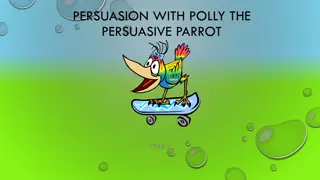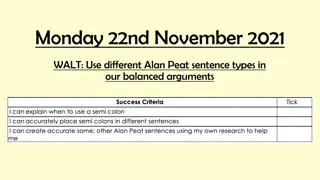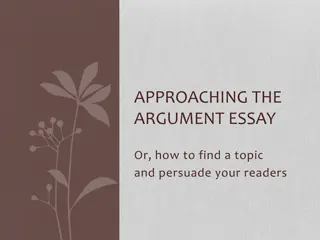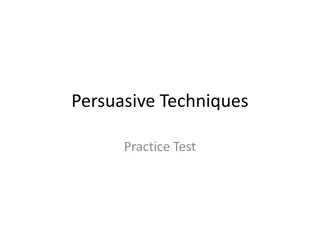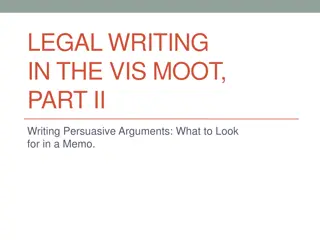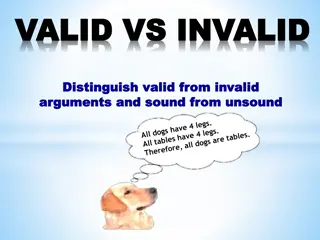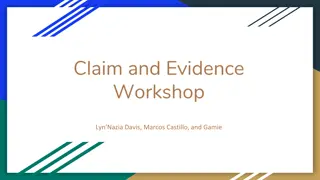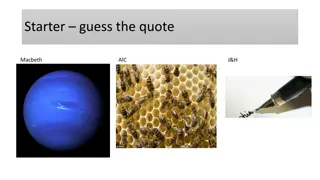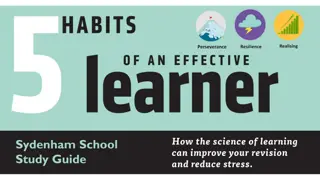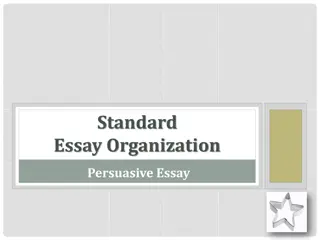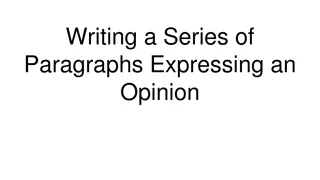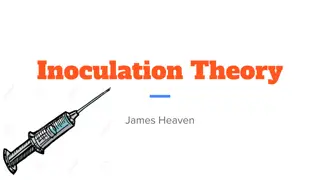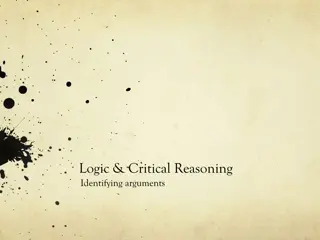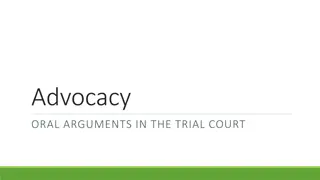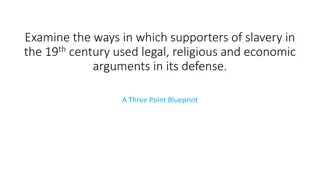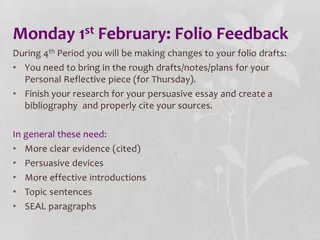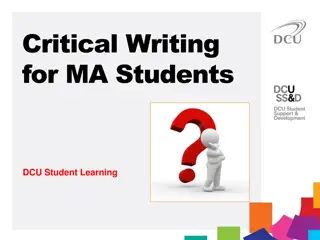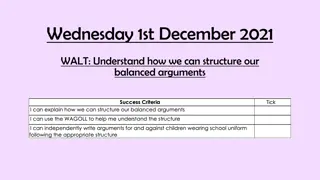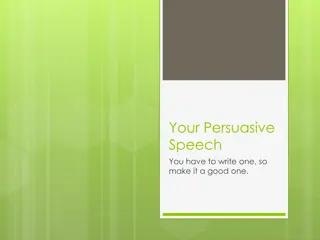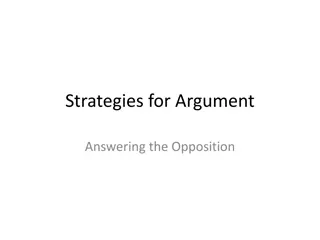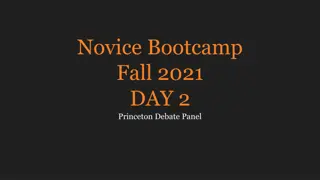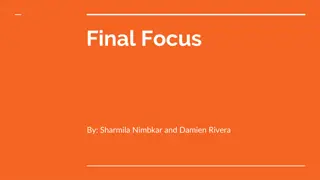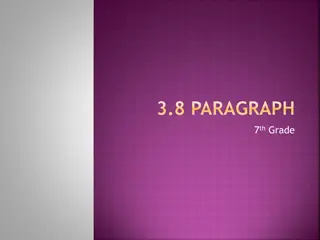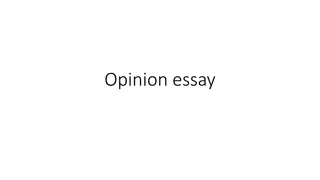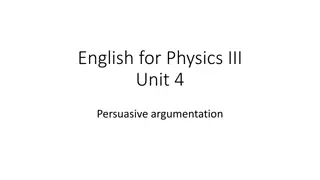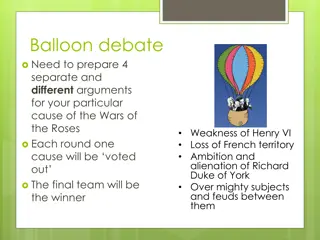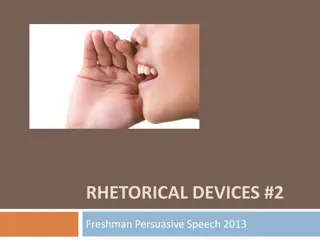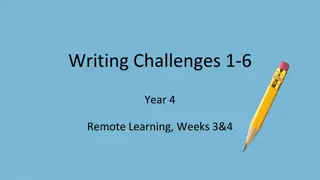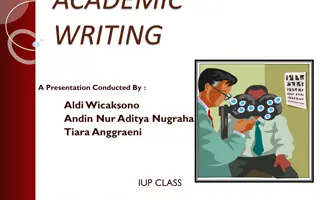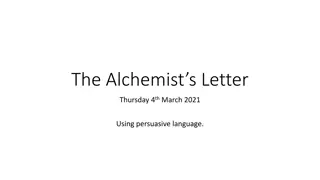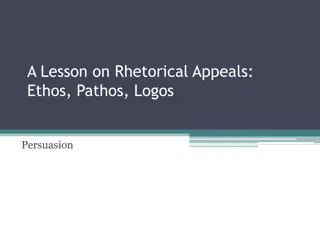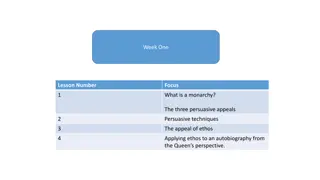Mastering the Art of Writing Persuasive Arguments
Explore the nuances between persuasive writing and argument writing. Uncover the importance of using logic and reasoning in crafting convincing arguments, supported by warrants and backing. Learn how to structure a strong argument, incorporate rebuttals, and strengthen your claims with evidence and counterarguments.
Download Presentation

Please find below an Image/Link to download the presentation.
The content on the website is provided AS IS for your information and personal use only. It may not be sold, licensed, or shared on other websites without obtaining consent from the author. Download presentation by click this link. If you encounter any issues during the download, it is possible that the publisher has removed the file from their server.
E N D
Presentation Transcript
SO YOU THINK YOU CAN ARGUE All About Writing An Argument
WHATISAN ARGUMENT?
Its just PERSUASIVE WRITING, right?
WRONG!! Persuasive writing is based on an emotional appeal and the credibility of the writer. Argument writing is based on logic and reasoning.
An argument is a claim that someone believes should or should not be true. Kids should be in school Monday through Saturday!
A claim by itself is not enough. You have to convince people why your claim is true. You do this by using warrants and backing.
I NEEDBACKUP! A main argument--or claim--all by itself is not very strong. Warrants explain how the evidence supports the claim. Backing supports the warrants.
Claim: Kids should not have to go to school on Saturdays. Warrants: Most working parents have weekends off, and students need to be with their families. Backing: Students spend 36 hours a week at school. Students spend 12 hours a week with their parents. Some students have jobs. Backing: 86% of 11th and 12th graders work on the weekends. Students need time for other activities. Backing: Only 12% of students aren t involved in extracurricular activities. On average, students spend 22 hours a week on extracurricular activities.
Arguments should also include rebuttals or reasons why the counter arguments are wrong Kids should not have to go to school on Saturdays.
Qualification Evidence Claim Warrant Backing Rebuttals
Warrant Backing Argument Claim Warrant 8/10/2011 Backing Warrant Backing Synthesis Warrant Rebuttal Counterclai m Warrant Rebutatl Warrant 11 Rebuttal
MAKINGA CLAIM Think about how a teenage driver might convince his/her parents to loan the family car. Some tactics might include: 8/10/2011 12 Present examples of trustworthiness from the past Instill feelings of guilt Whine Present statistics on teen driving to demonstrate a sense of responsibility. Based on an example from: http://www.unc.edu/depts/wcweb/handouts/argument.html
EVIDENCE Information that supports a claim or counterclaim (ex. facts, figures, examples) I passed the driving test the first time. (I know the rules.) 8/10/2011 Driving record at MVA I should be allowed to drive the car! I have never gotten a ticket. (I follow the rules.) Driving record at MVA Concluding Statement I have not lost my cell phone, wallet, or debit card. (I am responsible.) Personal communication Synthesis Traffic accidents are a leading cause of death for teenagers. (They don t pay attention as well) I probably should not be allowed to drive the car! NHTSA No previous experience with being responsible for something this potentially dangerous or expensive. 13 Personal communication
CONCLUDING STATEMENT Clarify relationships between claim and reasons, reasons and evidence, and claim and counterclaim. I should be allowed to drive the family car as I have demonstrated responsibility, fulfilled the legal requirements, and have maintained control of my driving. Even though it is true that traffic accidents are a leading killer of teenagers, it is obvious since not all teenagers have accidents that there are many safe teenage drivers. In previous circumstances, when I have been given the opportunity to be responsible, I have demonstrated this attribute so a lack of experience is not a strong counterclaim. 8/10/2011 Warrant Backing Claim Warrant Backing Synthesis Warrant Backing Synthesis Point out strengths and limitations of both claim and counterclaim 14
APPLICATIONOF TOULMIN Go to the class page under Argument ; scroll down to Toulmin Model . Then, read the student sample essays. Create a chart in your notes with the following. Identify the following in EACH essay sample The introduction strategy (quote, definition, anecdote, vignette, startling fact, rhetorical question) Each counter-point and rebuttal (meaning each time the student brings up a point AGAINST their thesis, but then refutes it. Which student sample is most persuasive? Why? Be prepared to defend your rationale to the class.
TOULMIN DRAFT ASSIGNMENT Write a Toulmin-based argument in which you defend, challenge or qualify the following statement: anyone elected to public office (mayor, governor, president) is obliged to live a morally exemplary life. Be certain to define morally exemplary 2-3 pages If you use outside sources, YOU MUST CITE THEM! Submit to Turnitin.com by 6am
SELF-EVALUATION After composing your own Toulmin argument and reading a peer s paper, how well do you think you understand the this more aggressive format? What are the strengths of your draft? What are the areas with which you struggled? Do you need any further assistance/resources from me?
TOULMIN FEEDBACK Get a chrome book, log into Turnitin and review my feedback as well as your peer s feedback on both your Classical and Toulmin draft. Be prepared to share out the most valuable suggestion given. Also, resources have been added on the class page under Toulmin to enhance your understanding of evidence and warrants.


